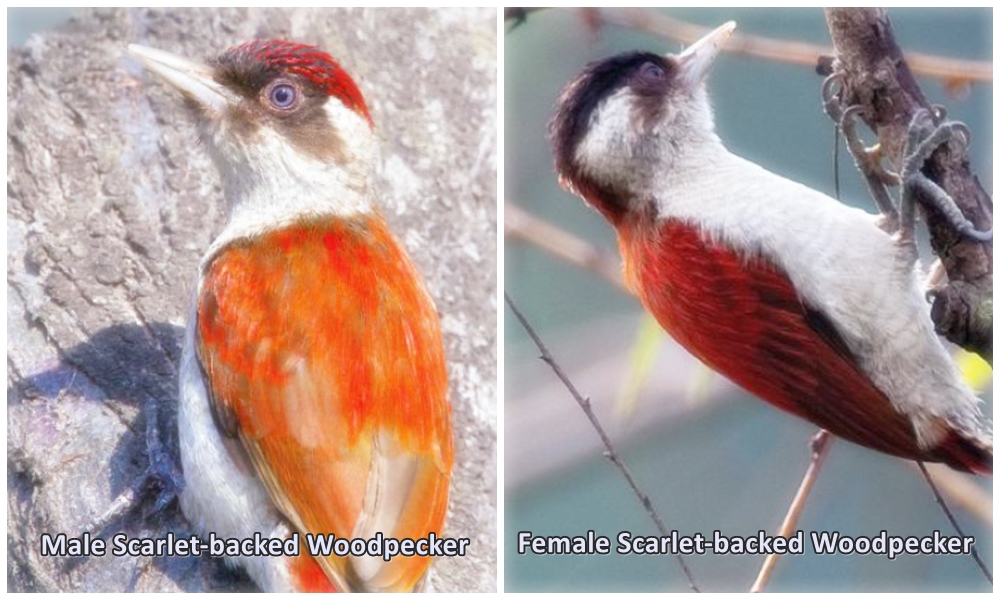Scarlet-backed Woodpecker (Veniliornis callonotus) is a striking scarlet on its upper parts and wings, with some brownish tones. The below area is cream to white, finely barred, or mottled gray. The woodpecker has a blackish tail barred white or buff on its outer feathers. But the wings are mostly reddish, and flight feathers are a little browner. The ear-coverts and ocular area are dusky-brown. The cheek, neck, and throat are white with Iris chestnut.
The bill is ivory or yellow, a little darker on the tip and base along with legs grayish. Both sexes are different: the male Scarlet-backed Woodpecker has a red crown and nape variably streaked black. However, the female bird has black from forehead to nape, sometimes with white tips on the nape. The young bird is more like to adult female, but buff below, mottled greenish-gray above. The young male may have red on his fore-crown.
Scarlet-backed Woodpecker call is very fast, strident, high-pitched, one to two seconds-long rattling keeer-r-r-r-r-r-r-r-r-r-r. Sometimes single, sharp kik and double ki-dik, are habitually repeated in a rapid series. Every now and then a more liquid quip and quip-ik, are also linked in a fast, bubbling series. The drumming of Scarlet-backed Woodpecker is several quickly repeated 1-second rolls.
It is a common woodpecker locally in Peru and Ecuador, but rare spotting in Colombia. It seems to be expanding into more humid forests, perhaps due to the clearance of favored arid habitats. The habitat of the Scarlet-backed Woodpecker is dry, open deciduous woodlands, thickets, arid scrub, and cactus country with scattered trees. Also degraded fragmented forests and riparian woods. Its range extended to South America. Restricted to parts of Colombia, Ecuador, and NW Peru, but possibly spreading.
The bird is found mainly in lowlands and foothills, but to 1600m in Peru and 1700m in Ecuador, resident and presumably a sedentary bird. There are two races, as per Taxonomy and variation: callonotus (SW Colombia, NW Ecuador) and major (NW Peru and SW Ecuador), which is more barred below, cleaner white behind the distinct brown ear-coverts patch, male with more black streaking in the red crown than nominate.
Some birds have a slight dark malar. Intergrades with mixed features occur. There are no similar species so far, however a visually atypical Veniliornis. Its Main call recalls the Golden-olive Woodpecker.
Food and foraging are presumably small invertebrates, but precise information lacking. Scarlet-backed woodpeckers are often found in pairs or families, working in trees and scrub at most levels, usually on twigs and thinner outer limbs.
Related Reading – Scaly-bellied woodpecker (Picus squamatus)
